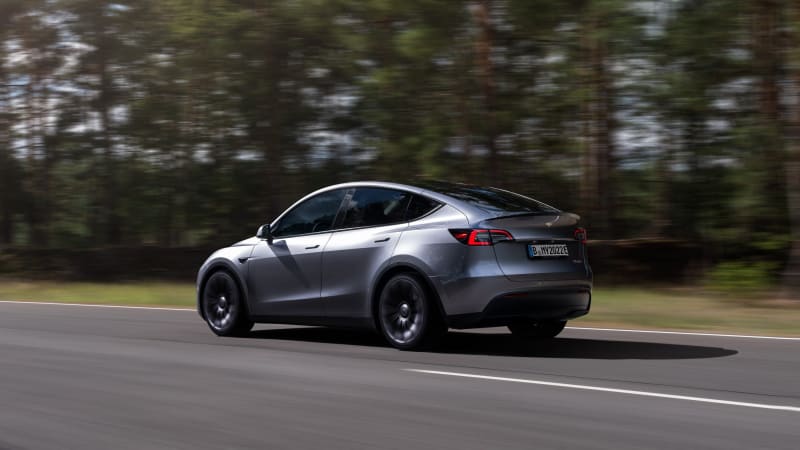Tesla average transaction prices down 25% in a year, undercutting even some gasoline cars

The
Model Y is eligible for the new federal EV tax credit.
Tesla
Tesla has cut its prices countless times throughout the year and did it again this month.
Tesla is offering cars well below September’s new car average transaction price of $47,899.
Tesla’s base Model 3 and Model Y are both less than that.
Tesla’s latest price cuts are continuing to blow even its gas competitors out of the water.
Last month, new cars saw an average transaction price (ATP) of $47,899, according to Kelley Blue Book. New car prices have slowly but surely been improving as of late, but are still pretty costly.
But with Tesla’s most recent price cuts, the base-level Model 3 sedan is now priced at a significantly lower $38,990. The cheapest Model Y SUV is now going for $43,990. After the $7,500 federal tax credit, the Model 3 comes out to $31,490 while the Model Y could go for $36,490 — not to mention a slew of possible state incentives.
Both are a whopping several thousand dollars less than the average vehicle.
It’s important to note the nuance here: List prices might differ slightly from the average price vehicles actually sell for, especially as manufacturer incentives average about 4%, according to data from Cox Automotive.
In Tesla’s case, the trim level options could bring its average up or down, but its sticker prices are essentially its transaction prices. Just last month, the Model 3 saw an ATP of $41,484 — still substantially below the overall average — while the Model Y transacted, on average, for $53,069 (above the average, but relatively close), according to Kelley Blue Book. Those will likely shift with the latest cuts.
Tesla vehicles overall saw a $50,931 ATP — a number driven up by its more costly Model S and Model X, but down almost 25% from a year earlier. That means Tesla ATPs as a whole are now lower than luxury competitors Acura, Lexus, Infiniti, and Volvo, Kelley Blue Book said.
Tesla pricing journey
Vehicle pricing has dominated headlines in recent years. The pandemic sent new and used vehicle prices soaring for months on end. Just now are car shoppers starting to see small signs of respite, though it’s hard to say if those signals will last.
To be sure, new car pricing is relatively flat year-over-year (down just $360 from September last year), while used car pricing is more nuanced. Certainly, the ongoing UAW strikes could eventually have an impact on the market and upend any pricing (and inventory) progress the industry’s been able to make this year.
EV prices, in particular, have been up for debate. An EV changed hands for $50,683 on average last month — down from a whopping $65,000 just a year earlier.
Tesla is largely to credit for that 22% decline in EV prices overall. There are less expensive EVs on the market, but much of the new electric product thus far has been geared toward higher-end buyers.
The company’s price cuts have been an effort to stoke demand as it sees incremental drops in market share as more electric competition enters the market. Tesla’s third-quarter production and deliveries dropped after record numbers over the previous few quarters.
Still, Tesla remains the dominant player in the EV market.
Elon Musk’s firm may be losing money with each cut it makes, but it’s all in the name of price parity. The closer the price EVs get to the price a car buyer would pay for an internal combustion engine vehicle, the more likely they are to consider going electric.
Today, luxury gas cars and luxury EVs cost about the same, but there’s still a long way to go for mainstream EVs to match the cost of their gas counterparts.







